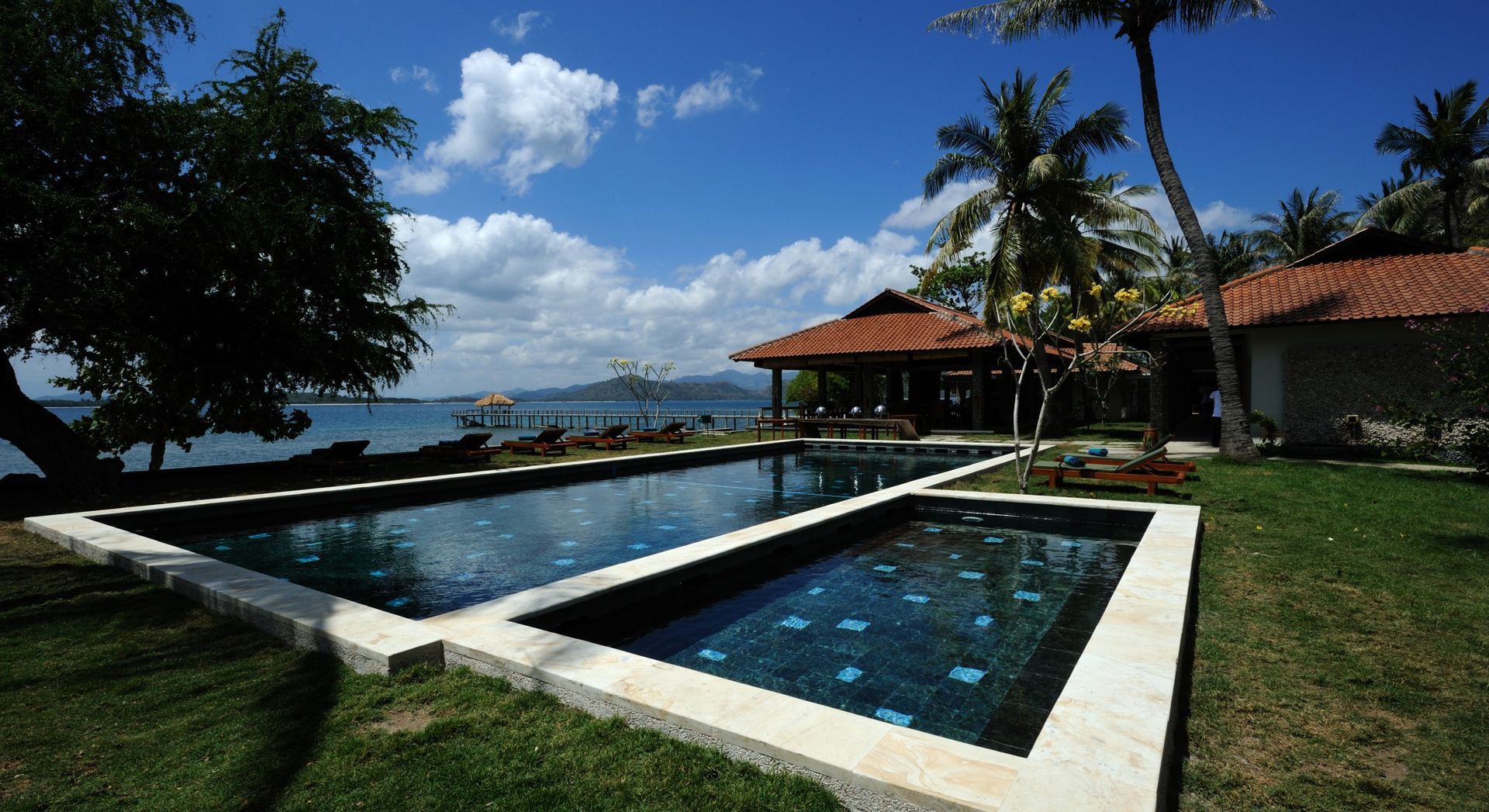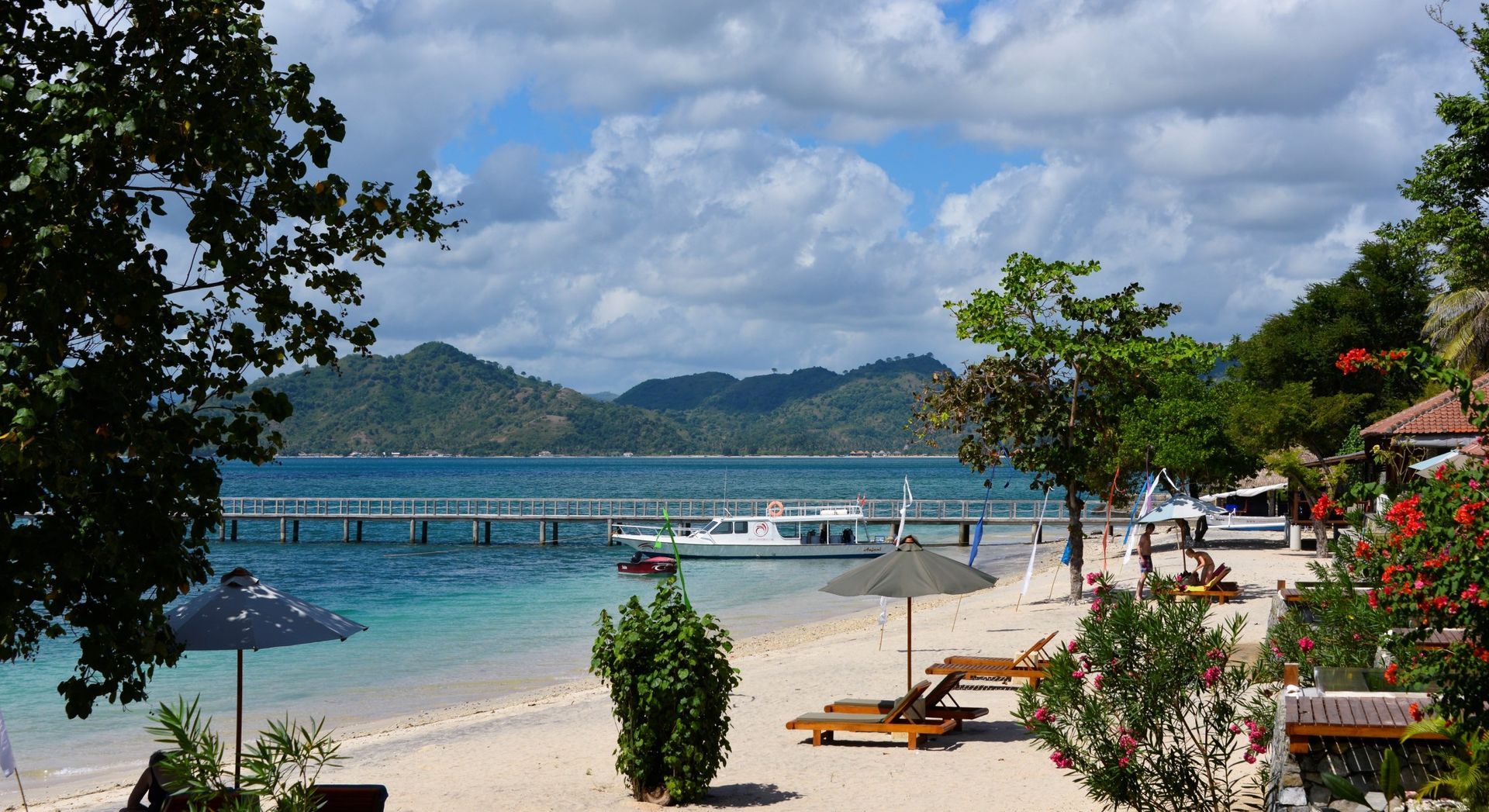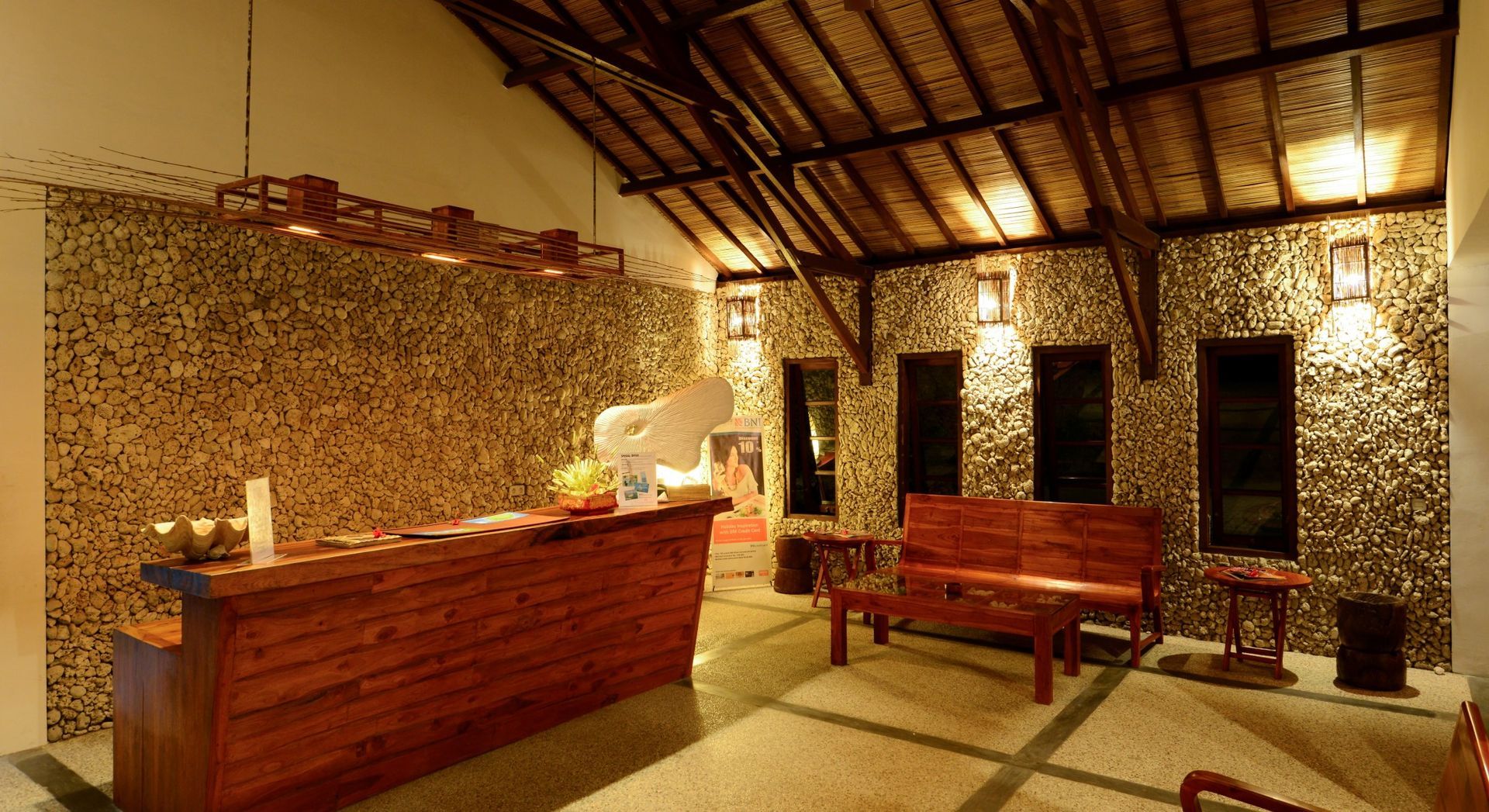About US
Cocotinos-Sekotong is the second of what could one day be a small chain of Cocotinos resorts, in Indonesia and beyond. In January of 2008, having successfully completed and opened the first Cocotinos resort in Manado, the owner TM Wong decided to take a trip to the island of Lombok, his first trip there despite having visited the neighbouring island of Bali on numerous occasions.
TM had heard and read a lot about Lombok and he was not disappointed. The island was still relatively unspoilt, with rolling hills and exquisite white- and black- sand beaches. Together with James Millar, a close friend of many years, he hired a local guide, scoured the length and breath of the island in search of suitable beach-front land. Sites on Gili Trawangan and Gili Meno were considered but finally, the present site on Tanjung Empet in Sekotong Bay was selected and bought by the end of the five-day trip. Although the northern “gilis” (islands) of Trawangan, Meno and Air are already developed and on the tourist map, TM preferred the undeveloped south-west with its 13 “secret” Gilis for its tranquility and unspoilt beaches.
Design work started immediately, and in less than six months all building permits were obtained, a testament to the pro-development policies of the local government. Work on the perimeter rubble-stone wall started in September 2008 and the main building works commenced in April 2009.
A local contractor was engaged to carry out the project. With labour from the nearby villages and skilled workers from Java, the resort was practically completed for soft opening on 1 August 2010.
Local craftsmen were commissioned to produce fine teak furniture, terrazzo baths and basins, rattan furniture and intricate basket work that were specially designed for this resort by the owner himself, with the assistance of his local architect and project manager, Teddy Imanto. The resort is much richer and more charming as a result of such contribution by local talent. The unique landscaping featuring local fruit trees and tropical flowering shrubs was designed and laid out painstakingly by Scotsman, James Millar, who brought with him a wealth of international experience in landscaping.
A few months into the construction period, an additional parcel of land adjacent to the resort was purchased and integrated with the main parcel, thus adding a private cove to the left of the resort and extending the beach front to over 300m. This private cove is where exclusive villas will be constructed in the future. With such a planned expansion, it is envisaged that Cocotinos will one day be 40-room property, up from its present allocation of 28 room keys.
An enterprising local Sasak woman by the name of Ibu Makram was an integral part of the resort during its development. She had lived on the land for over 40 years, raising cows, goats and chickens while looking after the land on behalf of the previous owners. During the construction of the resort, she cooked and did the laundry for management, staff and workers alike, while her children helped with site security and land clearance. All who knew her cannot forget her “kopi asin” or salty coffee, which became the required drink of the day. Ibu Makram’s new home in the nearby village of Tawun will be included in a land tour offered by Cocotinos-Sekotong that features local culture and everyday village life.
To cater to the growing demand for room nights during the high season, work on an additional 8 Garden Rooms commenced in Dec 2011. These new rooms will come into operation on 1 July 2012, bringing the total number of rooms and villas in Cocotinos Sekotong to 36
Awards
Below are some of the awards that we’ve been awarded
- Trip Advisor’s Certificate of Excellence 2016
- Trip Advisor’s Certificate of Excellence 2015
- Trip Advisor’s Certificate of Excellence 2014
- Trip Advisor’s Certificate of Excellence 2013
- Trip Advisor’s Certificate of Excellence 2012
- Booking.com 2015 AWARD OF EXCELLENCE
- Booking.com 2014 AWARD OF EXCELLENCE
- Hotels.com Certificate of Excellence 2015
- HolidayCheck.com 2014
Design and Construction
The design for Cocotinos Sekotong is an evolution of the design used in the first Cocotinos resort: an eco-friendly retreat in a warm and cosy setting, surrounded by lush greenery and picturesque views of the ocean and the islands, but on a grander scale.
Styled after a traditional Indonesian village, the luxurious accommodations are built around the central complex comprising the restaurant and swimming pool, thus providing a focal point for guests to gather and mingle. However, for those wishing for more privacy, the beach front villas offer the perfect choice of accommodation. Within each of the front row villas is an infinity plunge pool that melds into the horizon; the Tangkong Villa and the Rinjani Villa are also equipped with ‘privacy screens’ to provide the ideal setting for romantic evenings.
All rooms are airy as a result of the gable roof, high ceilings and ventilation windows in the bathrooms. The judicious use of glass blocks, skylights and glass panels gives the bedrooms and bathrooms a well-lit ambience throughout the day without the use of artificial lighting. Large overhangs and deep verandahs provide shade and protection from the rain, a characteristic feature of a traditional Indonesian village dwelling.
Like the first resort in Manado, Cocotinos Sekotong was built using natural material that could be found in the vicinity of the resort and nearby areas. “Batu Air” or water rock is a weathered stone, gathered from the beach by the village women; these beautiful stones were featured prominently on columns, exterior walls and shower stalls inside the bathrooms. Corals washed up on the beach are also used on accent walls and in various niches around the resort. Indecit , a granitic green rock was hewed from large boulders in the nearby hills and used to construct the perimeter wall; it was also processed into pavers for the restaurant floor and used to tile the swimming pool. “Buluh Tui” (a thin local bamboo traditionally used for fishing ) was used for partitions in the verandahs and also featured on internal doors. “Sapu Lidi” (coconut leaf-stem) is used to create the rustic walls lights throughout the resort. Washed-pebble flooring in the bathrooms and corridors provides a non-skid surface that is both pleasant and safe to tread on.
Green Policy
In addition to using eco-friendly materials during the construction of the resort, Cocotinos Sekotong is also committed to preserving the land and marine environment for future generations to enjoy. To this end, we do not follow the norm in using miniature disposable bottles for soap and shampoo: we instead use dispensers that can be refilled regularly.
We plan to use water dispensers in every room instead of providing plastic bottled water on a daily basis. Guests are also encouraged to reuse their towels to reduce the impact of chemicals and detergents on the environment. Recycling is practiced by the resort staff.
The Land
The 3.2 hectare piece of land on which Cocotinos Sekotong is built was destined to be the site of the second Cocotinos resort. It has all the characteristics suited to the development of a boutique hotel and spa; it has exclusivity – no other development could be built on either side – proximity to the airport, and glorious white-sand beaches with stunning views of the secret “Gilis” (islands). The long beach front with over 300 metres of white sand also provided an opportunity for the construction of more rooms and villas with stunning views of the ocean. Being an old coconut plantation by the sea, the land also gave the resort an established look and feel from day one, as less than one quarter of the 400 over coconut trees were felled during construction.



